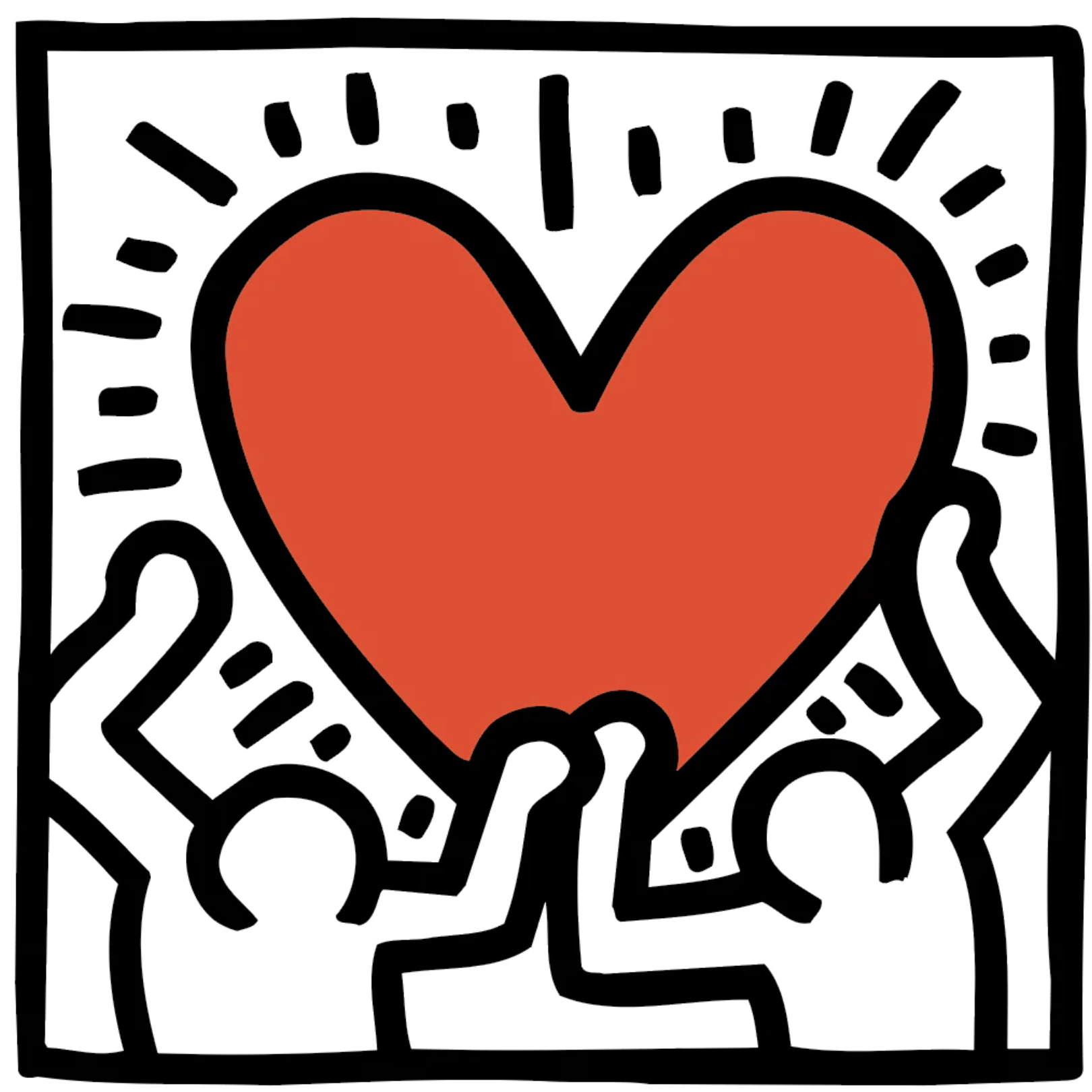
In January 1982, Haring was the first of twelve artists organized by Public Art Fund to display work on the computer-animated Spectacolor billboard in Times Square. That summer, Haring created his first major outdoor mural on the Houston Bowery Wall on the Lower East Side. In his paintings, he often used lines to show energy and movement. Haring would often work quickly, trying to create as much work as possible—sometimes completing as many as 40 paintings in a day.
In 1982, Haring participated in documenta 7 in Kassel, where his work were exhibited alongside Jean-Michel Basquiat and Andy Warhol. In February 1983, Haring had a solo exhibition at the Fun Gallery in the East Village, Manhattan. That year, Haring participated in the São Paulo Biennale in Brazil and the Whitney Biennial in New York. In April 1983, Haring was commissioned to paint a mural, Construction Fence, at the construction site of the Haggerty Museum of Art in Milwaukee. Later that year, Haring took part in the exhibition Urban Pulses: the Artist and the City in Pittsburgh by spray painting a room at the Pittsburgh Center for the Arts and creating an outdoor mural at PPG Place. While Haring was in London for the opening of his exhibition at the Robert Fraser Gallery in October 1983, he met and began collaborating with choreographer Bill T. Jones. Haring used Jones' body as the canvas to paint from head to toe.
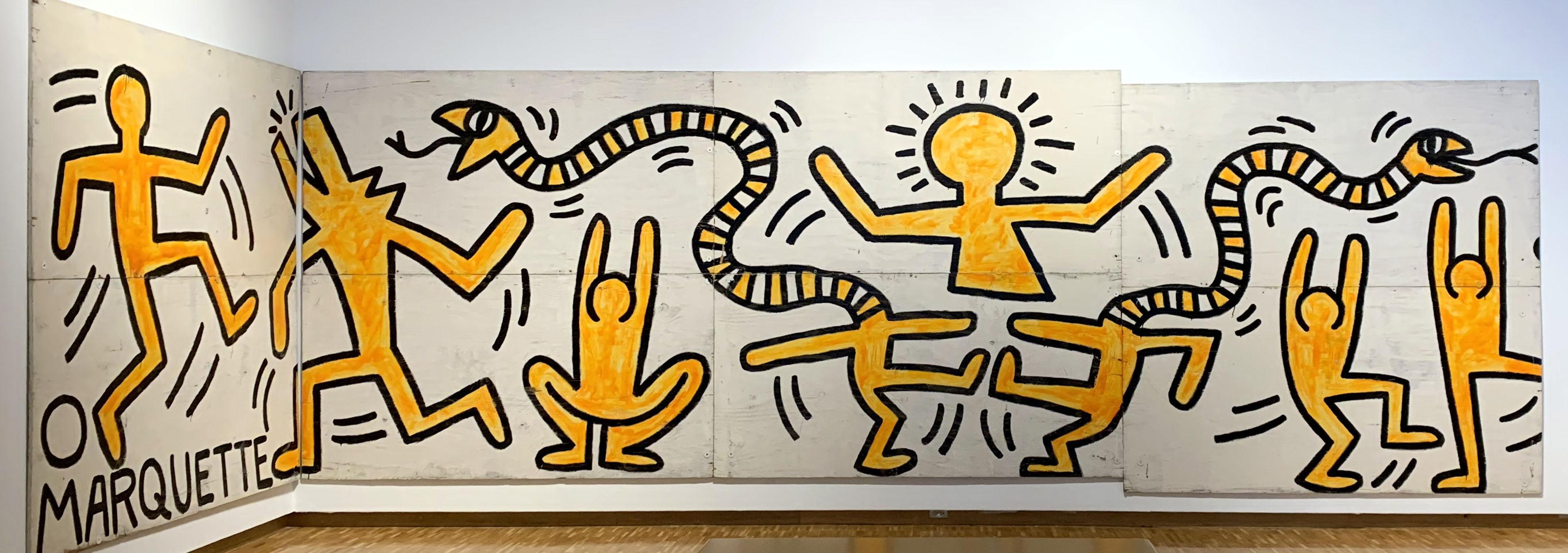
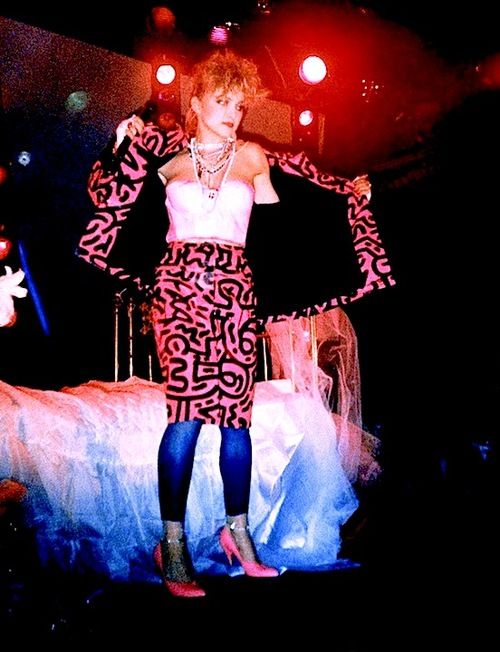
After Haring was profiled in Paper magazine, fashion designer Vivienne Westwood reached out to editor-in-chief Kim Hastreiter to facilitate a meeting with Haring. Haring presented Westwood with two large sheets of drawings and she turned them into textiles for her Autumn/Winter 1983-84 Witches collection. Haring's friend Madonna wore a skirt from the collection, most notably in the music video her 1984 single "Borderline”.
In 1984, Haring was commissioned by the United Nations to create a first day cover of the United Nations stamp and an accompanying limited edition lithograph to commemorate 1985 as International Youth Year. In July 1985, he made a painting for the Live Aid concert at J.F.K. Stadium in Philadelphia. Additionally, he painted a car owned by art dealer Max Protetch to be auctioned with proceeds donated to African famine relief. Haring continued to be politically active as well by designing Free South Africa posters in 1985, and creating a poster for the 1986 Great Peace March for Global Nuclear Disarmament. On October 23, 1986, Haring created a mural on the Berlin Wall for the Checkpoint Charlie Museum. The mural was 300 meters (980 ft) long and depicted red and black interlocking human figures against a yellow background. The colors were a representation of the German flag and symbolized the hope of unity between East and West Germany.
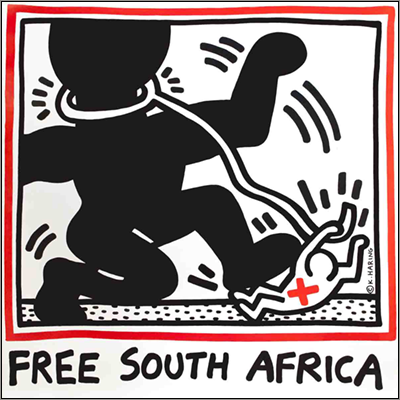
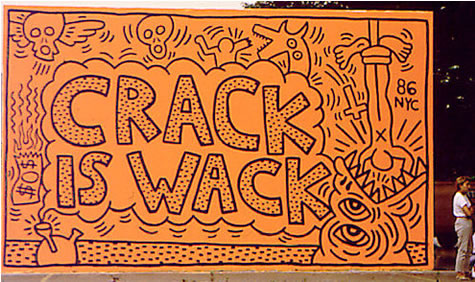
In June 1986, Haring created a 90-foot banner, CityKids Speak on Liberty, in conjunction with The CityKids Foundation to commemorate the centennial anniversary of the Statue of Liberty's arrival in the United States. Later that month, he created his Crack is Wack mural in East Harlem, visible from New York's FDR Drive. It was originally considered as vandalism by the New York Police Department and Haring was arrested. But after local media outlets picked up the story, Haring was released on a lesser charge. While in jail, Haring's original work was vandalized. This mural is an example of Haring's use of consciousness raising rather than consumerism, "Crack is Wack" rather than "Coke is it." He painted an updated version of the mural on the same wall in October 1986.